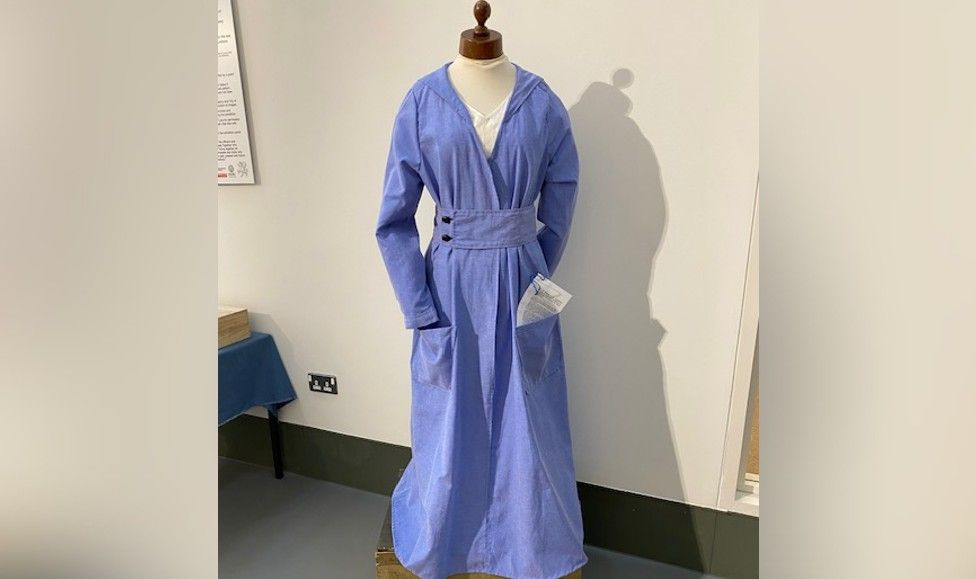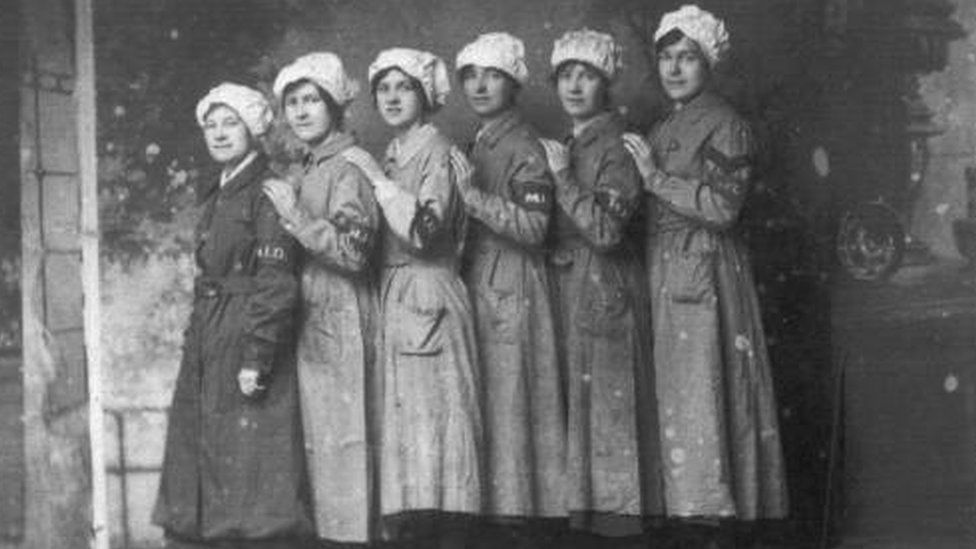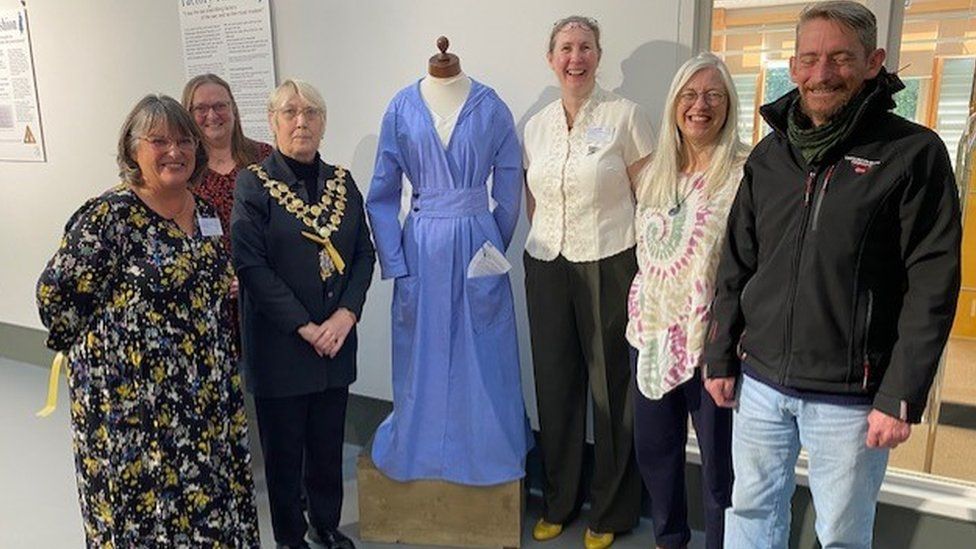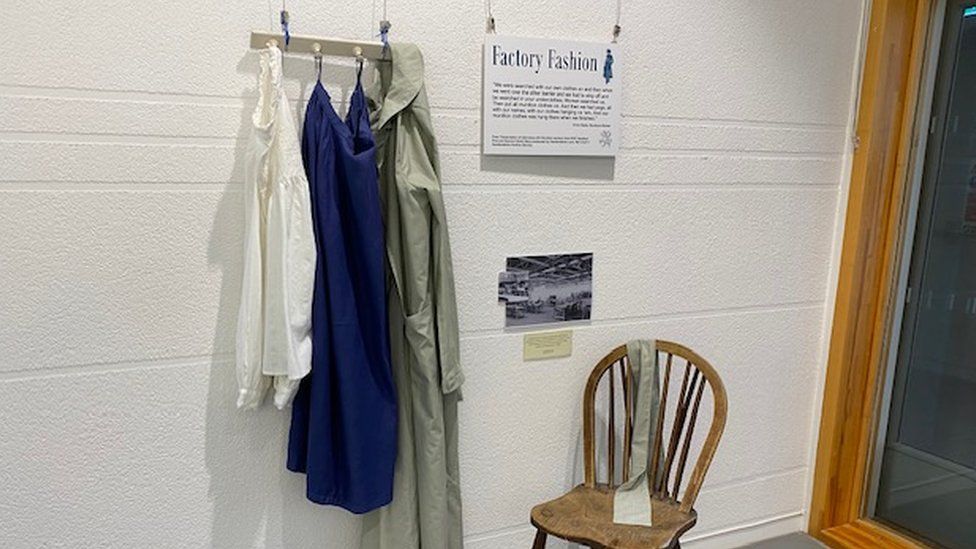
Clothing worn by munition factory workers more than a century ago has been recreated for an exhibition.
Factory Fashion, at Herefordshire Archive and Records Centre, reveals the kind of protective overalls worn by women at Rotherwas munitions factory.
The collection was opened by the Mayor of Hereford, who spoke of her own great-aunt's links to the site.
"We know now that these overalls weren't going to protect them from the chemicals," Jacqui Carwardine said.
"But they would have protected their clothes."
 HEREFORDSHIRE HISTORY
HEREFORDSHIRE HISTORYRotherwas munitions factory was one of Europe's biggest explosive filling sites during World War One, where 6,000 worked packing shells for allied troops.
It is now known that toxic chemicals from trinitrotoluene (TNT) turned worker's hair and skin a lurid shade of yellow that led to the nickname Canary Girls.
There was also risk of deadly liver disease toxic jaundice, which led to factories stepping up health and safety measures, including the provision of protective clothing.
The mayor's great aunt was one of 4,000 female workers at the Hereford factory.
"For some, it's where a family member worked during either the first or the second world wars, for others, it's the place where they made the bombs or where the women had yellow hair," she said.
"This exhibition brings history to life."
Rotherwas Together community history group recreated the overalls from an original pattern published in the Ross Gazette in 1917.
 ROTHERWAS TOGETHER
ROTHERWAS TOGETHERWe think of the overalls as being in dark colours such as khaki and grey but articles and paintings from the time show that the women wore many shades of blue, red and green," said Elizabeth Semper, the archivist who curated the exhibition.
Funded by a grant from Hereford City Council, the collection also features pamphlets issued by the Ministry of Munitions and original badges and buttons from overalls.
 ROTHERWAS TOGETHER
ROTHERWAS TOGETHERFollow BBC West Midlands on Facebook, X and Instagram. Send your story ideas to: newsonline.westmidlands@bbc.co.uk

No comments:
Post a Comment